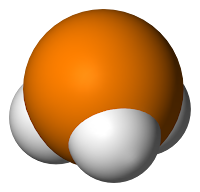Fumigation usually involves the following phases: First the area to be fumigated is usually covered to create a sealed environment; next the fumigant is released into the space to be fumigated; then, the space is held for a set period while the fumigant gas percolates through the space and acts on and kills any infestation in the product, next the space is ventilated so that the poisonous gases are allowed to escape from the space, and render it safe for humans to enter.
Tent fumigation (Tenting)
Structural fumigating techniques differ from building to building, but in houses a rubber tent is often placed over the entire house while the pesticides are being released into the vacant residence. This process is called tent fumigation or "tenting". The sealed tent concentrates the poisonous gases and prevents them from escaping into the neighborhood. The process can take up to a week depending on the fumigant used, which in turn depend on the severity of infestation and size of the building.Fumigation On Board Vessel
Chemicals
Methyl bromide was among the most widely used fumigants until its production and use was restricted by the Montreal Protocol due to its role in ozone depletion.[2][3]Widely used fumigants include:
- phosphine
- 1,3-dichloropropene
- chloropicrin
- methyl isocyanate
- hydrogen cyanide
- sulfuryl fluoride
- formaldehyde
Safety
Fumigation is a hazardous operation. Generally it is a legal requirement that the operator, carrying out the fumigation operation, holds official certification to perform the fumigation as the chemicals used are toxic to most forms of life, including humans.[1]Post operation ventilation of the area is a critical safety aspect of fumigation. It is important to distinguish between the pack or source of the fumigant gas and the environment which has been fumigated. While the fumigant pack may be safe and spent, the space will still hold the fumigant gas until it has been ventilated.













No comments:
Post a Comment